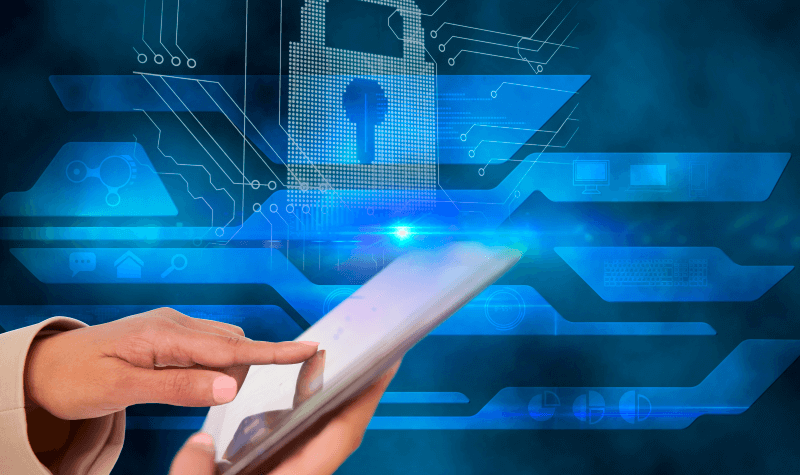
-
DURATION2 WEEKS
-
SUBJECT AREACircular Business Models: Reuse and recycle
-
COURSE LEVELSecond Cycle
-
CREDITS1.5 HP
-
INSTITUTIONREEDEAM
-
STUDY TYPEDistance
Applications 2025-09-15 - 2025-10-15
COURSE DESCRIPTION
Skills in development work are becoming increasing importance in professional life. This course offers you the opportunity to develop knowledge and skills in product development, production development, and business development, as well as the relationship between these areas.
You will be introduced to systematic working methods for product development, production development, and business development, with a specific focus on innovation and creativity in practical contexts. The goal of the course is to provide a deep understanding of the application of various processes in different types of development work. The objective is for course participants to enhance their ability to understand and apply development processes and gain deeper insights into how these processes relate to organizations' innovation and business strategies in order to achieve circular flows, resilience, and sustainability in the manufacturing industry.
The teaching consists of self-study using course literature, films, and other materials through an internet-based course platform, as well as scheduled webinars and written reflections. There are no physical meetings; only digital online seminars are incuded.
Course Start
The course starts in the spring of 2026, more information will follow.
Applications are made via www.antagning.se between 2025-09-15 and 2025-10-15.
Study hours
40 hours distributed over 7 weeks.
Target Group
This course is primarily intended for engineers in management or middle management positions within industry, whether they are recent graduates or individuals with extensive experience. The course is suitable for individuals with backgrounds in mechanical engineering, industrial engineering management, or similar educational background.
Entry Requirements
To be eligible for this course, participants must have completed courses equivalent to at least 120 credits, with a minimum of 90 ntry Requirementscredits in a technical subject area, with at least a passing grade, or equivalent knowledge. Proficiency in English is also required, equivalent to English Level 6.
Educational package in circular economy
This course Product/production and business development for circular flows is an introduction of the educational package. The courses Business development for circular flow, Product development for circular flows and Production for cirkular flows are free standing independent courses that build on knowledge in the field.
Please note that the number of participants for this course is limited, so we encourage you to apply as soon as possible!
courses you may also like

Do you want to learn the basics of Industry 4.0, at your own pace, whenever you want? Then the MOOC (Massive Open Online Course) Introduction to Industry 4.0 is for you. You will learn basic terminology and theory while gaining insight and understanding of the fourth industrial revolution and how it affects us. The MOOC: Introduction to Industry 4.0 is part of MDU's investment in smart production. The course is divided into ten modules, each of which describes different technologies in Industry 4.0. We estimate that it will take about 40 hours to complete the course and it is in English. The MOOC can also give you eligibility to apply for these 3 university courses at Mälardalen University: Internet of things for industrial applications, 5 credits Simulation of production system, 5 credits Big data for industrial applications, 5 credits

This course looks at where important materials in products we use every day come from and how these materials can be used more efficiently, longer, and in closed loops. This is the aim of the Circular Economy, but it doesn’t happen on its own. It is the result of choices and strategies by suppliers, designers, businesses, policymakers and all of us as consumers. In addition to providing many cases of managing materials for sustainability, the course also teaches skills and tools for analyzing circular business models and promotes development of your own ideas to become more involved in the transition to a Circular Economy. You will learn from expert researchers and practitioners from around Europe as they explain core elements and challenges in the transition to a circular economy over the course of 5 modules: Module 1: Materials. This module explores where materials come from, and builds a rationale for why society needs more circularity. Module 2: Circular Business Models. In this module circular business models are explored in-depth and a range of ways for business to create economic and social value are discussed. Module 3: Circular Design, Innovation and Assessment. This module presents topics like functional materials and eco-design as well as methods to assess environmental impacts. Module 4: Policies and Networks. This module explores the role of governments and networks and how policies and sharing best practices can enable the circular economy. Module 5: Circular Societies. This module examines new norms, forms of engagement, social systems, and institutions, needed by the circular economy and how we, as individuals, can help society become more circular.

Our society must shift to sustainable production. The production systems need to be developed in line with the global goals set by the UN and that have been agreed on by the countries. Sustainable production is about producing with, preferably, positive impact, but usually at least as little negative impact as possible, on people and our planet. This three-week course introduces you to sustainable production systems and helps you understand them from economic, social and ecological perspectives. The course begins with an exposé of how production systems have developed historically. You will learn about the UN Sustainable Development Goals. The course continues with an in-depth study of production systems, covering some prominent people and theories in the field. Next, you will learn about current developments in production innovation and Industry 4.0. You will also meet two companies in the manufacturing industry, Polarbröd and Sandvik Coromant, and see examples of how they work with sustainable production. The course concludes by giving you tools to design sustainable production systems. The course is aimed at anyone curious about sustainable production and how industrial production can be developed to become more sustainable. The course will be given in English.

Hydrogen is a clean fuel, a versatile energy carrier, and seems to be the answer to the climate change challenge. Why is everyone talking about it, and how is it going to replace traditional fuels? This modularized course provides a comprehensive overview on hydrogen as an energy carrier, with focus on fuel cell as hydrogen conversion technology. Hydrogen production and storage and their role in decarbonization will be covered. Different fuel cell technologies will be analyzed and discussed to present benefits and challenges in the use of hydrogen for power production, urban mobility, aviation, transportation, residential sector and much more. The learners will be able to combine the available modules to create their personalized education based on their needs and get insights on where and when hydrogen can play a role in a carbon-free society.

UMA TALKS CLIMATE CHANGE 2022 Climate Adaptation of the Built Environment DESIGNING CYCLES AT 64° Interior Urban Landscapes and the Water-Energy Food Nexus Climate change demands a recalibration of our built environment to become more resilient. Designing Cycles at 64° takes a multi-scalar approach addressing individual building typologies and, exemplarily for climate adaptation of northern climate zones, the city of Umeå with its diverse urban fabric as a whole. The active involvement of all stakeholders in the planning and future use of buildings and open spaces becomes key. How to create spaces that contribute to community building and social interaction while integrating a maximum of ecosystemic services is therefore a central question that demands for implementable methods, tools, processes and design solutions. At 64° latitude, interior landscapes and the water-energy-food nexus offer interesting possibilities to extend growing seasons and diversify crops, to reduce energy consumption while providing hybrid living spaces between inside and outside. By exploring greenhouse extensions and building envelopes as local passive architectural solutions, DC64° sets out to build productive interfaces between the private and public sector, academia involving the disciplines of architecture and urban planning, urban water management, plant physiology and vertical gardening, as well as the general public in a living lab format. Retrofitting the existing building stock, repurposing vacancies and expanding our building performance may accumulatively have a systemic impact both in terms of reducing water and energy consumption, as well as food miles, while buffering existing infrastructure networks and enabling local food production on site. Expanding on Bengt Warne’s Naturhus (1974) and following examples, we anticipate new multifunctional architectural models applicable in various contexts and scales. FORMAT / The program includes an introductory lecture that addresses climate urgencies and potential capacity for change in the context of the built environment the week before the one-day symposium (hybrid format). The symposium brings together practitioners, researchers and educators and consists of five thematic sessions that can be attended as a full day or individually as they are interrelated, yet also function independently (See program link below). INTENDED LEARNING OUTCOMES / Understanding of multi-scalar climate-adapation design approaches within the built environment with a focus on the Nordic context / Reflect on aspects of social sustainability when it comes to transforming buildings and inhabitants from being consumers to becoming producers / Umeå University School of Architecture Presentations Program Nov. 30. For any questions content-related questions please email us cornelia.redeker@umu.se sara.thor@umu.se constanze.hirt@umu.se

Virtual commissioning (VC) is a technique used in the field of automation and control engineering to simulate and test a system's control software and hardware in a virtual environment before it is physically implemented. The aim is to identify and correct any issues or errors in the system before deployment, reducing the risk of downtime, safety hazards, and costly rework. The virtual commissioning process typically involves creating a digital twin of the system being developed, which is a virtual representation of the system that mirrors its physical behaviour. The digital twin includes all the necessary models of the system's components, such as sensors, actuators, controllers, and interfaces, as well as the control software that will be running on the real system. Once the digital twin is created, it can be tested and optimized in a virtual environment to ensure that it behaves correctly under various conditions. The benefits of using VC include reduced project costs, shortened development time, improved system quality and reliability, and increased safety for both operators and equipment. By detecting and resolving potential issues in the virtual environment, engineers can avoid costly and time-consuming physical testing and debugging, which can significantly reduce project costs and time to market. The course includes different modules, each with its own specific role in the process. Together, the modules create a comprehensive virtual commissioning process that makes it possible to test and validate control systems and production processes in a simulated environment before implementing them in the real world. Modeling and simulation: This module involves creating a virtual model of the system using simulation software. The model includes all the equipment, control systems, and processes involved in the production process. Control system integration: This module involves integrating the digital twin with the control system, allowing engineers to test and validate the system's performance. Virtual sensors and actuators: This module involves creating virtual sensors and actuators that mimic the behavior of the physical equipment. This allows engineers to test the control system's response to different scenarios and optimize its performance. Scenario testing: This module involves simulating different scenarios, such as equipment failures, power outages, or changes in production requirements, to test the system's response. Data analysis and optimization: This module involves analyzing data from the virtual commissioning process to identify any issues or inefficiencies in the system. Engineers can then optimize the system's performance and ensure that it is safe and reliable. Expected outcomes Describe the use of digital twins for virtual commissioning process. Develop a simulation model of a production system using a systems perspective and make a plan for data collection and analysis. Plan different scenarios for the improvement of a production process. Analyze data from the virtual commissioning process to identify any issues or inefficiencies in the system and then optimize the system's performance. Needs in the industry Example battery production: Battery behaviors are changing over time. To innovate at speed and scale, testing and improving real-world battery phenomena throughout its lifecycle is necessary. Virtual commissioning / modeling-based approaches like digital twin can provide us with accurate real-life battery behaviors and properties, improving energy density, charging speed, lifetime performance and battery safety. Faster innovation (NPI) Lower physical prototypes Shorter manufacturing cycle time Rapid testing of new battery chemistry and materials to reduce physical experiments Thermal performance and safety It’s not just about modelling and simulating the product, but also validating processes from start to finish in a single environment for digital continuity. Suggested target groups Industry personnel Early career engineers involved in commissioning and simulation projects Design engineers (to simulate their designs at an early stage in a virtual environment to reduce errors) New product introduction engineers Data engineers Production engineers Process engineers (mediators between design and commissioning) Simulation engineers Controls engineer System Integration